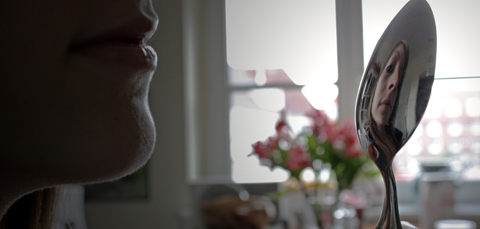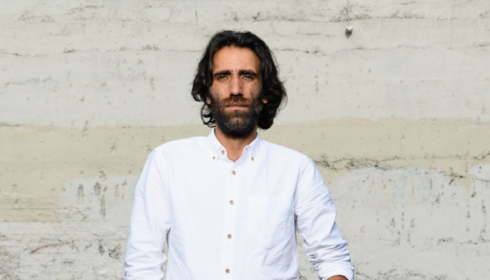
The small pamphlet in my hand declares: “The Choice is YOURS!” in pink font that is meant to look like crayon. The pages unfold like an accordion in alternating shades of pink and white. It’s compact enough to fit in the pocket of a school dress or the palm of your hand, and designed to look ubiquitous – cool, at a stretch – the kind of thing any girl would carry around.
There are small icons dotted throughout the pamphlet in rows: a bike, a dress, earphones, sneakers, a stack of books and a graduation hat. Inside, more rose-coloured text explains, “forced marriage is when you are pressured emotionally or physically into marrying someone without your permission”.
Melba Marginson is the Executive Officer of the Victorian Immigration and Refugee Women’s Coalition (VIRWC), the organisation behind the pamphlets. They’re designed to provide information to school-aged girls. The Choice is Yours campaign was launched in September of 2013 in an effort to provide a community education-based approach to the issue of forced marriage in Victoria.
Marginson says she hears a lot of “anecdotes like ‘I didn’t know, we went on holiday and I didn’t realise everything was set up for me, including my bridal dress.’ It’s as simple as that in most cases where there is deception.” Most girls affected by the practice, it seems, are unaware that their end of term rituals could culminate in the entirely more serious rituals of marriage.
Incidences of forced marriage are underreported and most stories are anecdotal or anonymous by necessity.
The VIRWC is one of the groups attempting to educate girls and their communities about the possibility of an international forced marriage. They work from the Queen Victoria Women’s Centre, a heritage-listed Edwardian building that operated as the Melbourne Hospital in the early 1900s.
It has high ceilings and wide airy corridors whose walls are lined with bright artwork. The elaborate, red brick structure looks out of place sandwiched amongst the modern office buildings dominating the Lonsdale and Swanston Street intersection.
In February 2013, the Australian Parliament broadened the parameters of “exploitation” to explicitly include forced marriage in the Crimes Legislation Amendment (Slavery, Slavery-like Conditions and People Trafficking) Bill 2012. Safa Al Marhoun, the Community Development Officer at the VIRWC, thinks that a few specific cases may have prompted this amendment.
“They take them on school holidays overseas, arrange the marriage and everything.” Then the young girl arrives back in Australia. “[She would] go to Immigration and say ‘well this is not really what I agreed on’ and that’s when it would come to the attention of the authorities.”
In August of 2013 Safa and Hala Nasr, also from the VIRWC, presented the findings of their research at the UNAA Status of Women Network’s Roundtable. One of the case studies provided in their presentation to exemplify the risks is a harrowing one. A young woman, “J”, in her early 20s from a multicultural background, is forced into a marriage with “P” whose uncle organised the union.
After moving to Australia J experienced violence at the hands of P and his extended family members. The abuse ranged from controlling her behaviour, to forcing her to do all the house work and even to the point where she would be forced to sleep on the floor as a form of punishment. She had no access to her finances as all of her wages were paid into her husband’s bank account. J was not allowed to speak to any of her family members overseas nor was she allowed to access her educational certificates, jewelry, passport or Medical Card.
The isolation of most women living in forced marriages makes it extremely difficult to obtain information about their circumstances, let alone improve them. Incidences of forced marriage are underreported and most stories are anecdotal or anonymous by necessity. A growing collection of evidence is being gathered by women’s centres, legal centres, school counselors and teachers, but the larger image remains unclear. In December of 2012, the Women’s Minister of the NSW Parliament estimated that there could be close to 1000 Australian cases of forced marriage each year.
The case study, though brief, is all too familiar to some marginalised women. “We wanted to provide education,” Safa says of the Choice is Yours campaign. “We’re looking at the situation from a prevention method, not dealing with the aftermath. That’s why we wanted to produce educational material.” The pink pamphlet is part of that campaign; criminalisation is futile without prevention measures to accompany it.
An organisation working from a similar premise is the Australian Women Against Violence Alliance, a group dedicated to the prevention of practices like forced marriage. Dr Trishima Mitra-Kahn, the Acting Program manager, and Julie Oberin, the Chairperson of the organisation, emphasise that “criminalization alone is insufficient to tackle this harmful practice of gender-based violence” adding that “adequate and continued resourcing of community support projects” is a must.
It’s not hard to imagine why a victim of forced marriage, usually still in their teens, would decide not to report their family to the police
“You can’t really force anyone to ’fess up,” Safa explains. The government has taken a largely criminal justice approach to dealing with forced marriage. For a guilty verdict the maximum penalty is seven years. In March of last year, it gave the Red Cross a new “client category”, to provide for victims of forced marriage.
The Australian Federal Police (AFP) assess and refer victims to the organisation, which now has the financial capacity to help in a practical way. Their success was stymied in the months since launching, and Safa believes, as do others, that this was because of the inclusion of a criminal element. “Every client that approaches the Red Cross has to go through the AFP to assess the case,” she said.
It’s not hard to imagine why a victim of forced marriage, usually still in their teens, would decide not to report their family to the police. In recognition of this difficulty, the government passed the Vulnerable Witness Act on 27 June 2013 which anticipates the complexities of giving evidence against family and the possibility of community retribution. But the approach still faced challenges, according to community groups.
Earlier this year, when a 26-year-old man was arrested for having an ongoing sexual relationship with a 12-year-old girl living the Hunter region – the issue of forced marriages made national headlines. Community groups like the VIRWC capitalised on the attention the issue has received in the last several months by forming a coalition with other community groups and hosted by the Red Cross to form the Victorian Forced Marriage Sector. The idea is to share information and expertise between service providers – but adequate funding support for community education remains difficult to come by.
Mitra-Kahn and Oberin believe that “forced marriage” is just not a term that women identify with. “There is much more implicit coercion from family rather than physical force and young girls and women often feel disempowered, and the fact that they aren’t able to resist the coercion makes them feel more disempowered.”
Having a firm legislative basis for condemning the practice of forced marriage is important for all organisations. It is both a mandate for action and a safety net for women. But it doesn’t catch everyone. A civil marriage is recognised by Australian civil law, but while a religious marriage can be registered, it doesn’t have to be. Allegedly, the man arrested in the Hunter region only came to the attention of authorities when the young girl applied to Centrelink for help with his visa. Women who take part in religious ceremonies that haven’t been registered are not protected by the law.
“Under Australian law, she’s not really de facto, she’s not married or anything,” Safa warns. “If she does get pregnant, she’s just seen by the law as someone who got knocked up basically, at 16. I think it’s a worse situation because she’s not protected. If that person she married runs off, she can’t get child support, she can’t get alimony, she can’t get anything. That’s the worst situation. When you’re 14, that’s not the first thing you’re thinking of.”
It’s not the kind of thing any 14-year-old should have to consider. It is for this reason that the best solution, as far as the VIRWC is concerned, takes place through community education and the empowerment of women.
Before you’re taken to the airport, if you suspect you are being flown overseas for the purpose of a forced marriage, hide a spoon in your underwear.
When asked how entrenched she thinks the practice actually is, Melba Marginson is thoughtful. “My suspicion is, a lot of it is happening but there may be a very thin line between what’s called an arranged and a forced marriage.” It’s a distinction that causes a lot of confusion. In the pink and white pamphlet, arranged marriage is defined as “when your family chooses your partner and arranges your marriage with your permission”. Globally, a huge number of marriages are conducted this way. They differ from forced marriages because the full and free consent of each party is not required in the case of forced marriages. But full and free consent is often hard to identify from the outside. This is why the education of women and communities is such a fundamental aspect of prevention.
“Arranged marriage is like matchmaking in a Muslim community,” Safa says. “Even if she is 17, if she is happy with her situation then there is no element of force, and that’s okay.” The fundamental hope is that the young people involved understand that this distinction exists; that the choice is indeed theirs.
In the UK there is a specialist task force called the Forced Marriage Unit. It’s dedicated to providing a comprehensive response from government and communities against the practice of forced marriages. When all options are exhausted, one helpline based in Derby advised young girls: before you’re taken to the airport, if you suspect you are being flown overseas for the purpose of a forced marriage, hide a spoon in your underwear. They say the spoons will set off metal detectors in British airports and will act as a signal to airport staff. It’s a final opportunity to tell someone who can help that you are in danger.
“The thing is,” Safa smiles when I bring up the spoons strategy and its successes, “with forced marriages, especially when it’s with people that are in their teens, no matter how much advice you give them, the only time they will actually want to seek help is when it’s crisis mode.”
Perhaps in addition to legislative change and community education, Safa could start tucking spoons into her pocket-sized pamphlets.
Leona Hameed is a staff writer at Right Now and a freelance journalist based in Melbourne. She also produces radio for SYN Media and FBi in Sydney.


